Planned and built during the Brazilian dictatorship, the Elevado João Goulart, a two-mile viaduct mostly known as the Minhocão, connects the center of São Paulo with its western area. Due to its proximity to people’s homes, many complained about the rising car noise in a city where motor transport domination was, and is still, booming. But, at more than 50 years old, the destiny of the Minhocão is still uncertain as it is being taken over by pedestrians. It could be demolished; it could also become a park.
With a lack of public spaces in a crowded city, conquering new places for pleasure is mandatory to survive the concrete jungle. Nowadays, the viaduct is opened to pedestrians at night and at weekends. With no cars rushing in the upper part, people can walk, run, cycle, skate, or even sunbathe in bikinis, a bit “closer to the sun” –maybe that is the reason why some call it Paulistana beach – their concrete beach.
I moved to São Paulo during the pandemic, right after the second wave. Leaving the airport at night, I was welcomed by a dark sky covered in clouds mixed with smog, gray buildings standing at the sides of the road and a dramatic flux of motorbikes, cars and big trucks. At first glimpse, one would think this is a gray city. But gray defines more than just one colour. And São Paulo has many shades of grey.
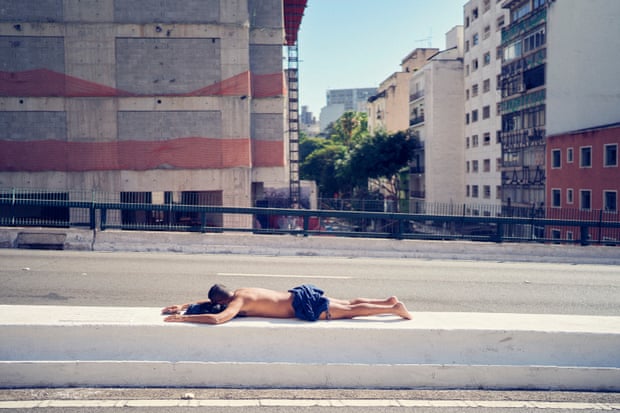
As a newbie cyclist in such a chaotic city, I started asking for recommendations of places I could ride to, and the Minhocão was a word I heard repeatedly. It’s Paulistano’s beach, someone told me smiling, so I decided to give it a try. I cycled there on a sunny summer day. The sun was hot, as the streets were too. When I finally got there, I was caught by the relationship that people had with that huge mass of concrete surrounded by more concrete, shining under the direct sunlight. Almost every space was filled with tall buildings. How would someone call that their beach? But it started becoming mine too. At that time, I wished I had my camera, but it wasn’t on me, so I planned to come back soon.
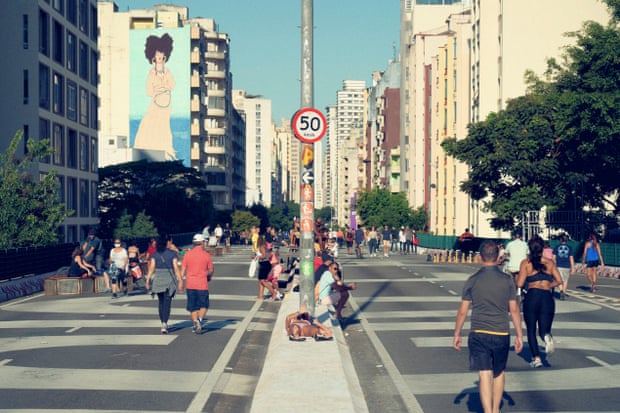
Photography has been to me not only a great tool to bring stories to life but also to meet people in places I don’t know at all. Many of the persons I photographed have become friends today. This essay was my first approach to São Paulo, a city of strong contrasts that I still don’t know nor understand, where trees grow higher and violence coexists with love. And in places like these, it is people, and not places, that make us feel at home.
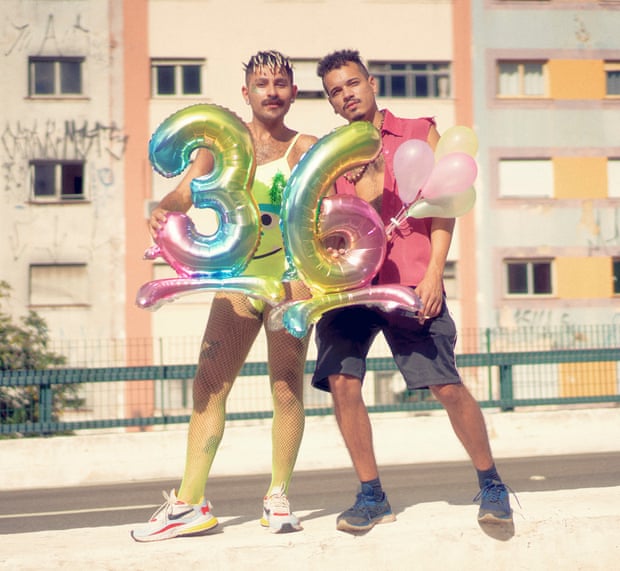
Vagner Nascimento and Leandro Pinho
Vagner: “I was not born in the city of São Paulo; I am from the outskirts of the city. So I used to have more contact with nature. And with that, I had more possibilities to meet people outside the typical São Paulo rush. But here, I needed to create some space like the ones I had before in my city. I perceived that it was possible to meet people in São Paulo building relationships that were not mechanical, automatic, noisy, or heavy. Here is a place where one can give oneself that little space of pleasure while watching the poetry of concrete. The space is dedicated to another kind of interaction. To see people running but not behind the bus to go to work. I like coming here. São Paulo does not have many public spaces. Here in São Paulo, what’s public and what’s private get very mixed up. Generally, public spaces are invaded by private interests. I like to see this space as the possibility for people to be a little freer.”
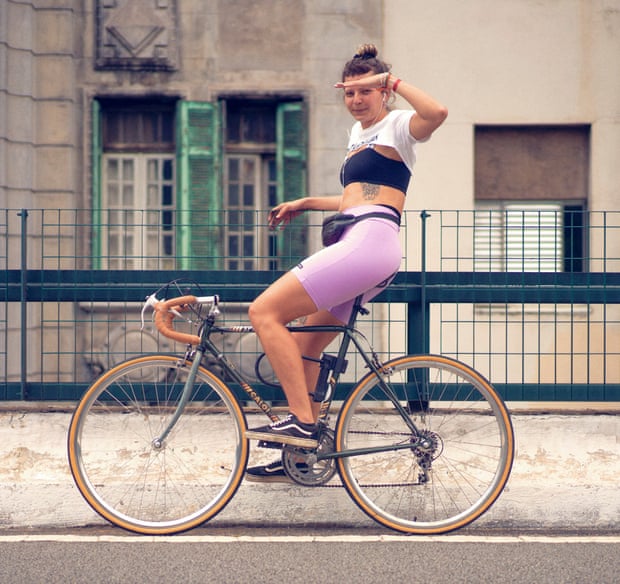
Nathalie Sudbrack
“The Minhocão viaduct super represents São Paulo. When I first arrived in the city, my dream was to live near here, precisely because I am a cyclist. Here I come and go several times and I end up meeting many people. Working in a home office you don’t move around the city, so I end up coming here at night and on weekends. A few months ago I had broken my hand and it was here that I was able to ride my bike again a few weeks ago because there are not many potholes, and the street is in good condition.”
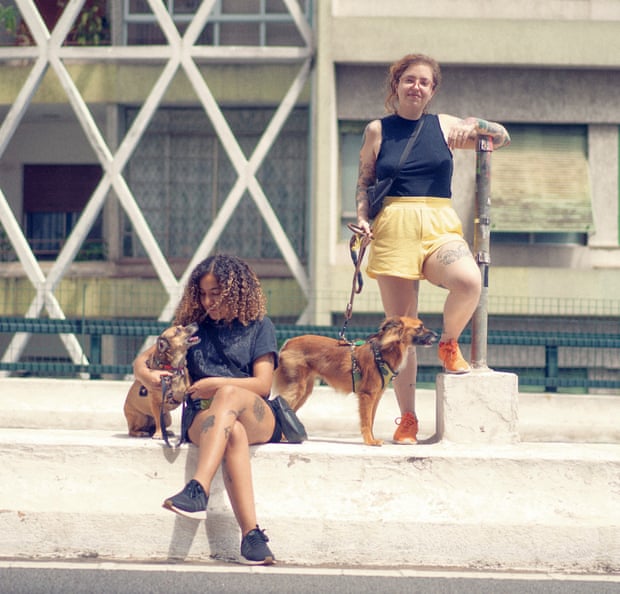
Simone Evangelista and Sofia Fernandes (with Manu and Laika)
Sofia: “This is our beach because it is the public place we have to meet, to sunbathe – we don’t have a beach nearby and sometimes not even a park, so this is our beach, our park. I think we need to make better use of public spaces in São Paulo. The Minhocão is an occupation of public space and I think it’s great. But it’s also complicated because there are people doing sports here on top but there are also people starving down below.”
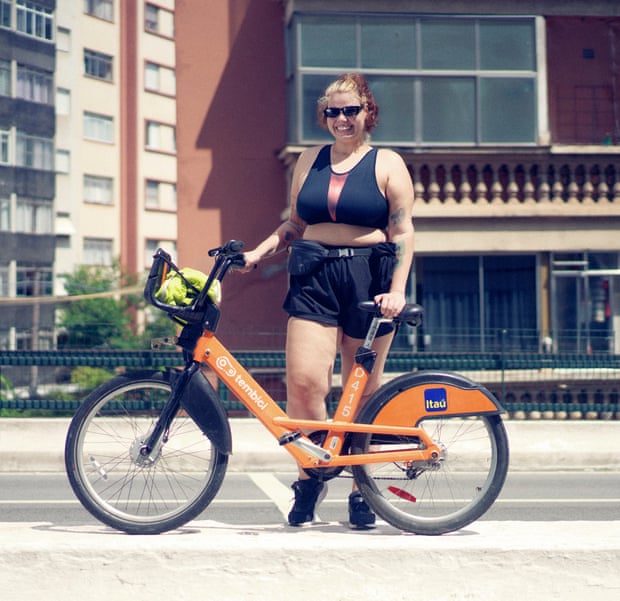
Francis Santos
São Paulo is immense, from north to south. Spaces like these end up being spaces of great concentration of culture. Here you can find everything, do everything. It’s a cultural pole for the Paulistanos who are used to living in the stone jungle, always working, always running. Occupying this space like this is a conquest in a city with a lack of public spaces. During the pandemic, it was closed for a long time and we really needed it.”
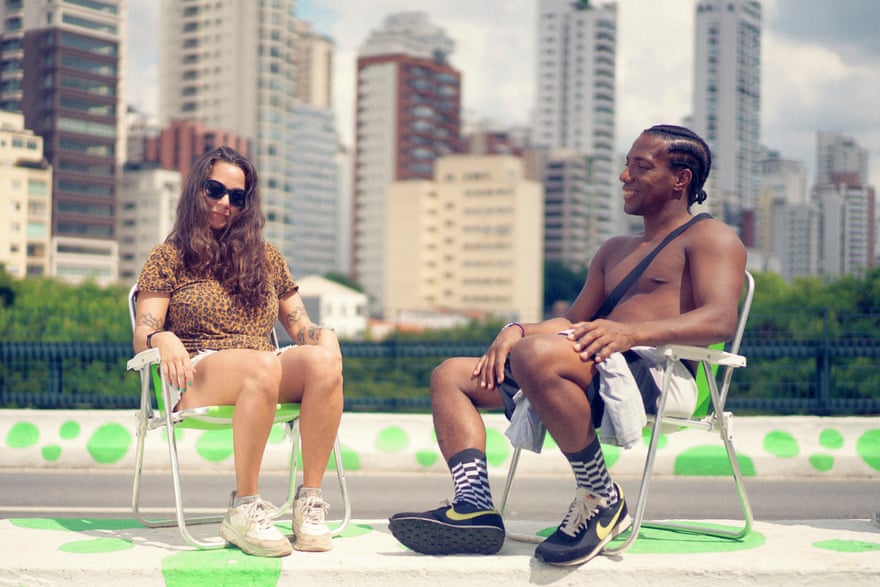
Cendira Carvalho and Hugo Azevedo
Cendira: “This is our backyard. We eat here every week. Really, it’s our leisure area. We come to see the moon, to have breakfast, to take a shower with bottled water when it’s too hot. It’s a matter of knowing how to use what you have. I just wish the homeless people sleeping below the viaduct had the same chances to enjoy.”


Ketsia Sales and Tatiane Henrique
Ketsia: “The first time I came here I felt a bit awkward. Tatiane invited me to sunbath and I am used to sunbathing at the beach. I am from Salvador, and Salvador is a city with coast. When I got here and saw everyone in bikinis sunbathing and others having a drink, to me that was an opportunity to feel the sun a bit closer. São Paulo is colder than Salvador, and also it’s very cloudy too, with a lot of pollution. I am in love with the sun and here I can stay a bit closer to it. Because of this feeling I now see this as my beach.”
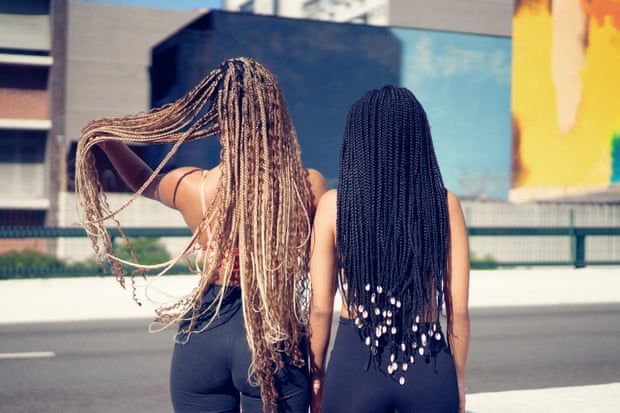
Tatiane: “I lived once on the beach and here I was missing it a lot. What people do in this city is not that common, people in bikinis sunbathing. When I started seeing people living that way I asked myself, why should I hold back? This is something that makes me feel comfortable. I used to anxiously wait for a trip to Rio de Janeiro to get that fresh breeze and a fancy sun tan, and then I found this place here, which is closer to my home.”

Tiago Miranda and Mário Miranda (with Larah and Margot)
Tiago: “The Minhocão is a place of expansion to us. We love going there to sunbathe, doing some sports and walking with our dogs. It’s a place to breathe and enjoy. It’s really interesting the relationship that Paulistanos have with the concrete.”
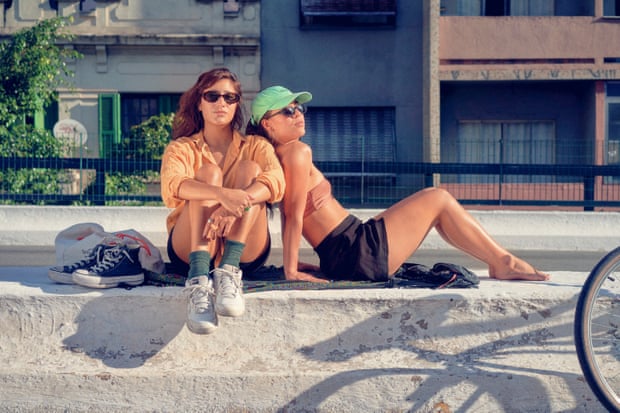
Giulia Binotti and Laura Parente
Laura: “I miss the beach a lot – to be closer to nature, breathe fresh air, exercise open air. Since this place is right in the center of the city, it ends up being a place with easy access. I live close by, I love it.”
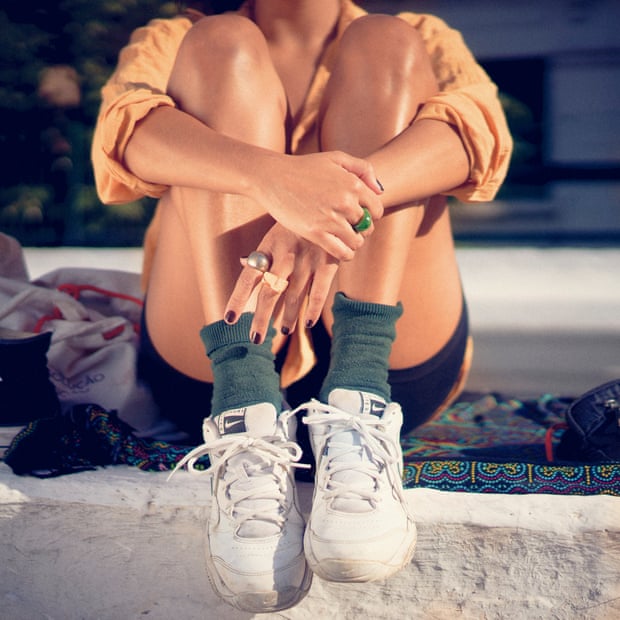
Giulia: “It’s nice to come here. You skate, then have a sun bath, then you walk a little bit and drink coconut water. Thankfully there are some new green parks opening, such as Augusta Park, but we don’t have many options.”
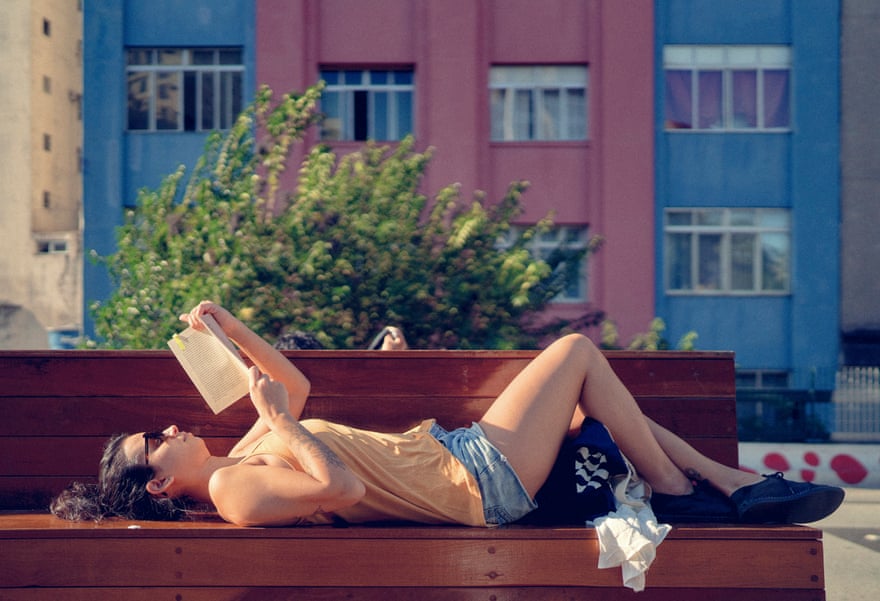
Gabriela Ribas
“I like coming here to be in the open air and have contact with the sun. I live by myself in a small flat here in the centre. I come here to use this space. Here it is a safe place. I like being here and having a look at the horizon. Considering the size of São Paulo, there is a lack of open parks and places to enjoy.”
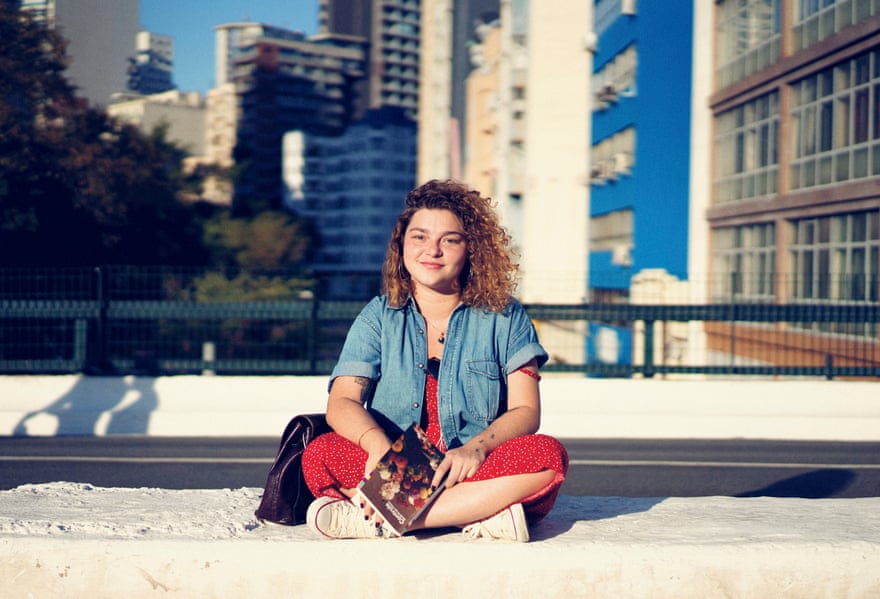
Julia Asenjo
“The sun hits my flat in the morning but only until noon. So when possible, I come here looking for the sun to read. Same thing I do at home. I found this place very characteristic of São Paulo, a great translation of the people who live here because it’s very difficult to find moments of quietness and joy in such a big city that breaks through everything. It’s a contrast that has a lot to do with the city – people coming to this huge piece of concrete that has nothing paradisiac or attractive as it is.”

Cleber Rene Alves
“This here is a blessing. For a Sunday, for a Saturday. We don’t have many squares, many places to practice physical exercise. We occupy the public space. Minhocão is part of this conglomerate called São Paulo and we have the freedom to occupy it.”
www.theguardian.com
George is Digismak’s reported cum editor with 13 years of experience in Journalism